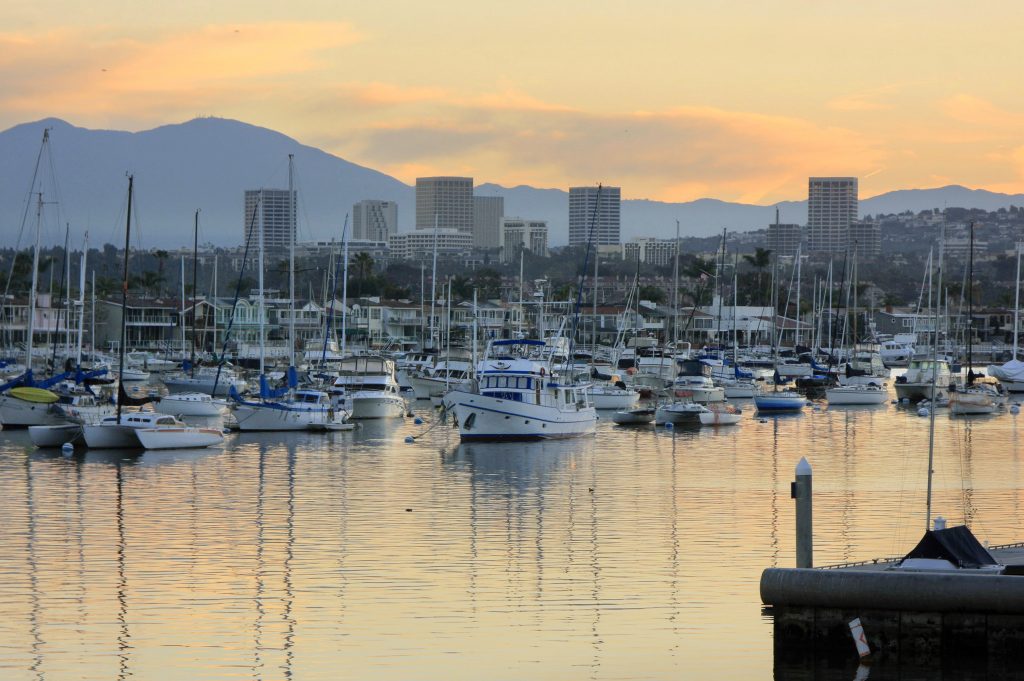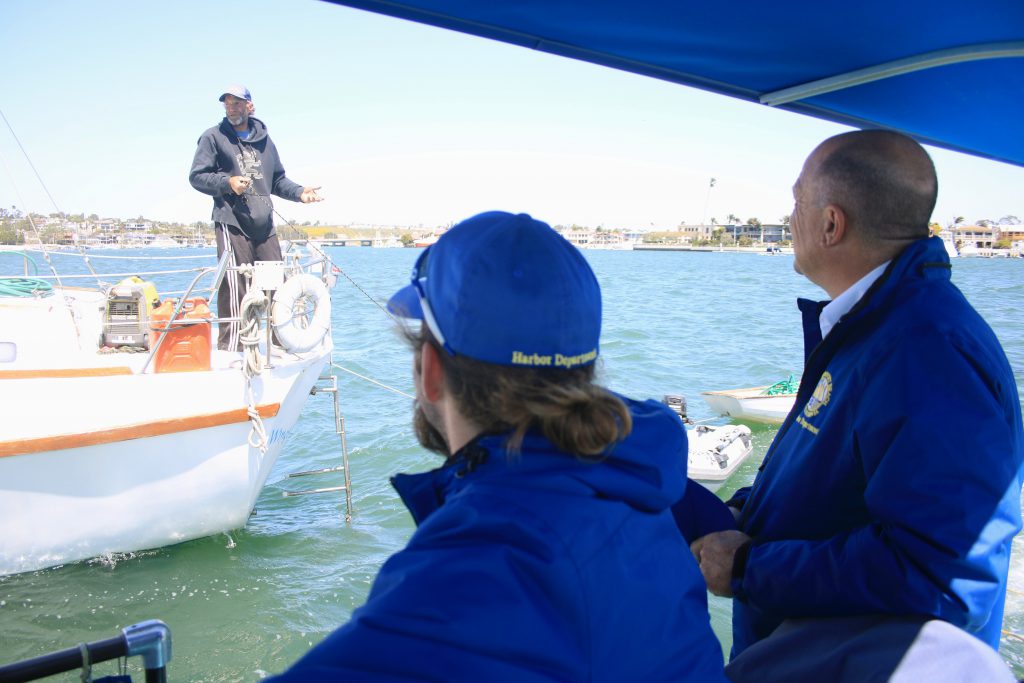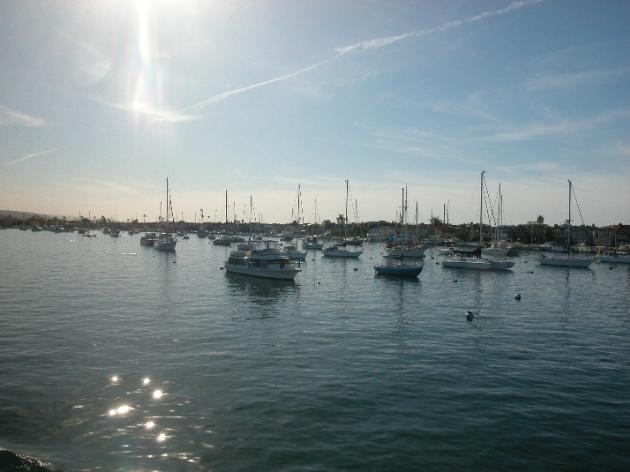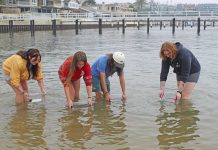
— Photo by Sara Hall ©
The future of Newport Harbor includes big dredging projects, evolving the newly created Harbor Department, reviewing and possibly revising the city’s harbor code (Title 17), and fine-tuning management of the moorings, among a long list of other goals, issues and tasks.
About 75 people packed into the community room at the Newport Beach Civic Center on Wednesday to hear more about the future of Newport Harbor. Councilman Marshall “Duffy” Duffield and City Harbormaster Kurt Borsting were the guest speakers.
Changes have been made in the city and need to continue going forward, Duffield commented.
The city took over management of the moorings from the Orange County Sheriff’s Department Harbor Patrol in mid-2017 and soon after created the Harbormaster position and team.
The OCSD focused on law enforcement (and still does), management of the moorings got the job done, but that was about it, Duffield commented. It was a complaint-based model, which was “adequate.” Now, they hope to be more proactive, Borsting noted. They hope it will get better as the department grows, Duffield agreed.
They still need and depend on the OCSD Harbor Patrol, Duffield added.
The Harbor Department, recently created by merging other divisions and responsibilities, is based out of Marina Park on the Balboa Peninsula.

— Photo by Sara Hall ©
Duffield, who previously sat on the Harbor Commission, said the new Harbor Department and the Harbormaster team was a recipe for success, but they are currently working with a “shoestring budget.”
Tasks and issues Duffield mentioned include: Obtaining a fire boat, public docks, bay water quality, dredging, mooring management, and more.
The Harbor Department will also focus on education and enforcement of municipal codes, including noise, nuisance abatement, live aboard regulations, Marine Activities Permit supervision, and more.
“It goes on and on,” Duffield said.
Together, they can do great things and make the harbor great, Duffield said.
“I’m encouraged moving forward that eventually we will have a first-rate, awesome Harbor Department that everyone can be proud of,” Duffield said.
Public awareness is key going forward, Borsting noted.
“With these modest beginnings, we’re going to need everyone’s help,” Borsting said.
They need to be the harbor’s greatest cheerleaders, he added. The team aims to be “ambassadors” for the harbor, Borsting said.
Going forward they have to work with or join forces with various agencies, Duffield commented. They love to hear about water quality, so projects like the upcoming solar-powered, trash collecting water wheel, a “magical machine” as Duffield called it, get positive reactions.
They are currently working on public dock time zone education, Borsting said. Making sure that the time limit rules are enforced ensures that the entire community is able to use the dock and it does not get over-monopolized, he explained.

— NB Indy file photo
The big project in the future will be dredging.
“If we don’t dredge, we don’t have a harbor,” Duffield said.
The dredge project, which has been discussed for several years, would cost approximately $23 million, Duffield said. The city has put up $1.2 million, he added.
Duffield, along with Councilman Brad Avery and city staff, visited Washington D.C. several times to discuss the project and try to obtain funding.
“We believe we’ve made great headway and are confident we’ll get the money,” Duffield said. “How much of the $23 million? We’re not sure.”
But they feel they’ve made positive progress, he emphasized.
The biggest challenge is what to do with about 200,000 cubic yards of “unsuitable” sediment that is not allowed to be dumped at the LA-3 disposal site, Duffield explained.
“We are working on a solution right now and are proposing it to the Army Corps next week,” Duffield confirmed. “I’m confident staff will do a good job selling it to them so we can move forward.”
The rough, condensed version of the plan is “dig a deep hole, bury the material and then put good sand on top,” Duffield explained. It’s the only economical and feasible solution, he added.




